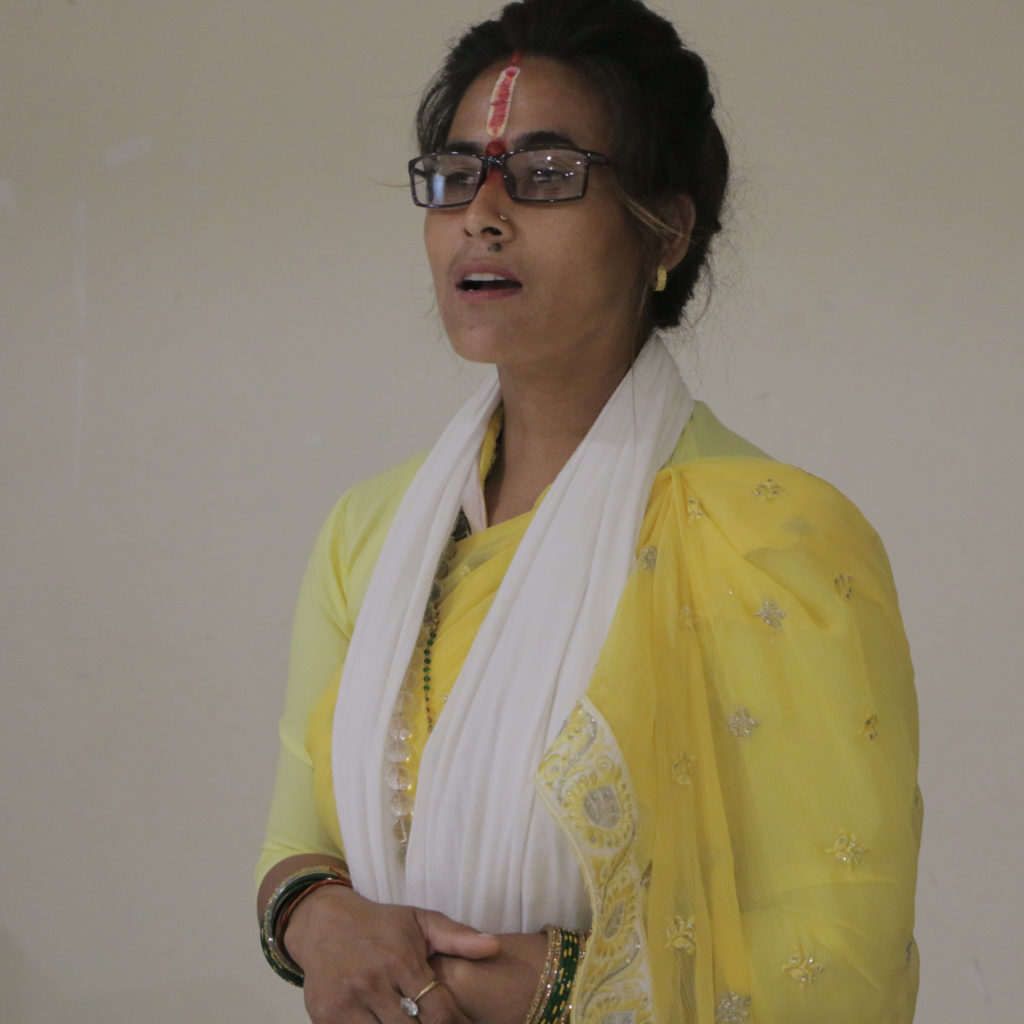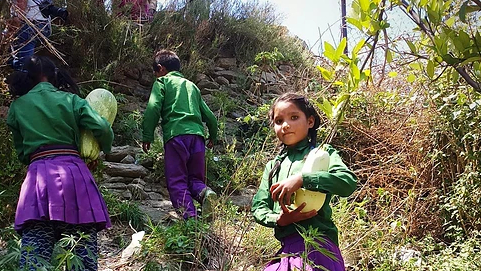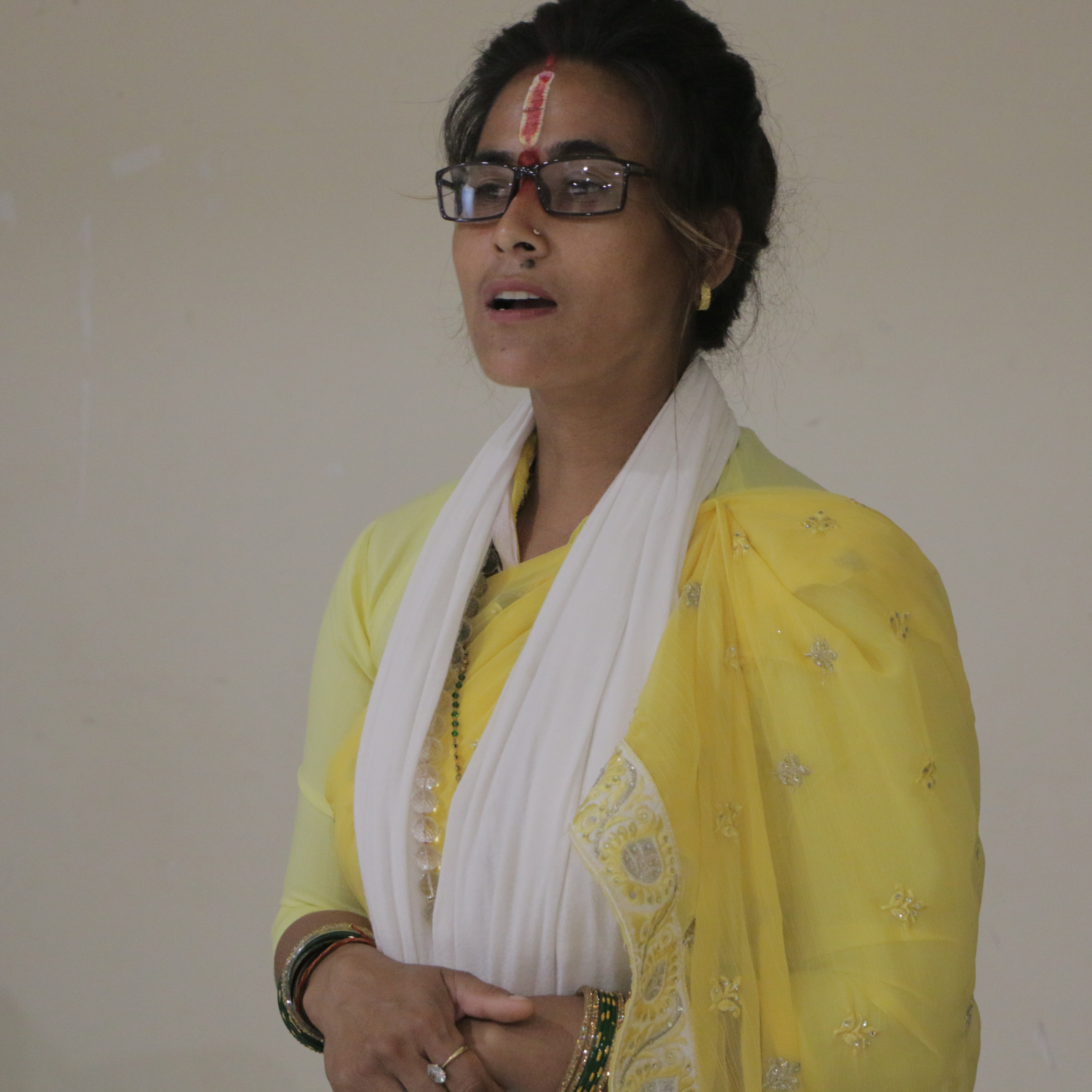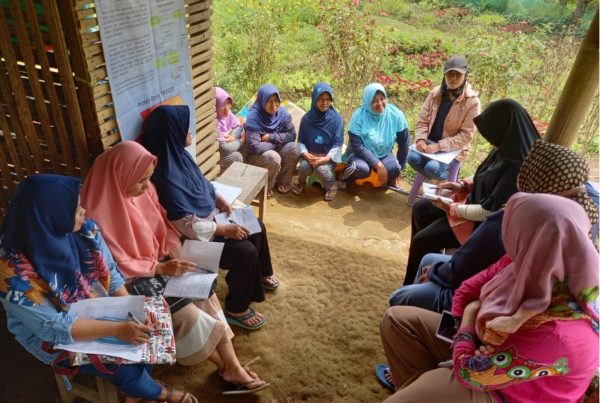The Sustainable Development Goal of Zero Hunger aims to end hunger, achieve food security, improve nutrition and promote sustainable agriculture. Giving children access to sustainably grown nutritious fruit and vegetables in schools can play an important role in achieving this goal. Rural Service Providers in the project “Nutrition Sensitive Agriculture in Mountain Agro-ecosystems” are bringing the knowledge to do so, to rural communities.
Nutrition in Schools
My name is Chetana Malla Shahi and I am coordinating a school nutrition garden program in the Ema village, Mugu district, in the rural mid-west of Nepal. The area is surrounded by a high mountain range, which makes it a very remote area, limits access to diversified food.

© Embrace Good Nutrition
Almost two years ago, we conducted a baseline study in the village to learn more about the food people grow and consume. The study showed that most inhabitants are involved in farming but do not grow a large diversity of crops. There is also limited access to animal protein as well as fruit and nuts.
This situation motivated me to organize several activities around nutrition in Shree Pashupati Basic School, where I am a teacher myself, and in adjoining villages from where students come to the school.
I started this initiative thinking that schools can be an important way to share information about agriculture and nutrition. Following conversations with other teachers and the school management, I began to provide theoretical and practical knowledge on how to cultivate nutritious fruit and vegetables in a school garden to both students and their guardians. Soon after we had established a diversified nutrition garden which contributes to daily meals in the school.
Beyond the School Garden
The school garden produce includes nutritious vegetables like carrots, radishes, tomatoes, broad leaf mustard, spinach, cauliflower, cabbage, pumpkin, as well as fruits such as apple and peach. In addition, the school curriculum now includes lessons on nutrition-sensitive agriculture which are given on every first and last Friday of a month. Beyond the school, the guardian households, of which 67% are women, were provided agricultural inputs such as seeds from our nursery as well as cultivation equipment e.g. drip irrigation to encourage the set-up of their own household kitchen garden.
I also connected with the, then, District Agriculture Development Office, District Health Office, and local organizations and convinced them to collaborate with us in promoting messages on nutrition, hygiene, and sanitation throughout the district on a monthly basis.
After some time, we noted a gradual change in food habits. The community understands and appreciates the value of better-quality meals for the students. Noodles and biscuits are being replaced with healthy local food items. The school has become a learning center and a role model in terms of how to promote nutrition-sensitive agriculture in schools. Having seen our example, the, then, District Education Office supported the up-scale of school nutrition education to other schools in the district and now 11 schools in Mugu have nutrition gardens.
All of this led to the introduction of campaigns for ’One school, one nutrition garden’ and ‘one house, one kitchen garden’ in the district.
In the previous blog posts, you’ll find personal stories from farmers and updates from organic projects working on the ground to build change. Check them out!








